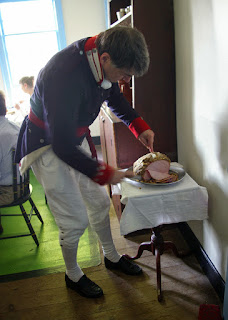The title page of the Richard Bentley edition of Jane Austen's Pride and Prejudice, the first illustrated edition.
"Though they had now been acquainted a month, she could not be satisfied that she really knew his character." Persuasion, Chapter 17
The exposition of character has always been central in Jane Austen's novels. But how do we reveal our character in the age of new media?
Courtesy of Pemberley Digital we have an interesting TEDx talk that addresses this question (hat tip to Sharon Cassidy for finding this). The speaker is Julie Salmon Kelleher, a critical and creative writer who asks how new forms of media will shape how we perceive ourselves and how we will relate to others.
To answer this question, she uses Pride and Prejudice and the Lizzie Bennet Diaries. Pride and Prejudice is, of course, a written novel. The Lizzie Bennet Diaries is a series of video blogs presented on the Pemberley Digital website and onYouTube. Both tell essentially the same story of the struggle to comprehend human character.
Ms. Kelleher points out that the development of the printed word allowed the inclusion of much more individual detail than could be supplied in oral storytelling. Jane Austen took advantage of this to supply a highly detailed look into the thoughts of her characters. Her mechanism for doing this was free indirect discourse. If you have ever spent a sleepless night wondering what free indirect discourse is all about, then this video may be the answer, as Ms. Kelleher presents a succinct and clear explanation. In free indirect discourse we hear the thoughts of the character as they are occurring, narrated by a third person. Ms. Kelleher uses Elizabeth's reaction to Darcy's letter as an example.
"She perfectly remembered every thing that had passed in conversation between Wickham and herself in their first evening at Mr. Philips's. Many of his expressions were still fresh in her memory. She was now struck with the impropriety of such communications to a stranger, and wondered it had escaped her before. She saw the indelicacy of putting himself forward as he had done, and the inconsistency of his professions with his conduct. She remembered that he had boasted of having no fear of seeing Mr. Darcy -- that Mr. Darcy might leave the country, but that he should stand his ground; yet he had avoided the Netherfield ball the very next week. She remembered also, that till the Netherfield family had quitted the country, he had told his story to no one but herself; but that after their removal, it had been every where discussed; that he had then no reserves, no scruples in sinking Mr. Darcy's character, though he had assured her that respect for the father would always prevent his exposing the son." Pride and Prejudice, Volume 2, Chapter 13.
To modern readers this does not appear as especially surprising or novel, but, as the speaker points out, such intimate thoughts were generally not presented in early novels. Access to a character's inner thoughts had to be obtained through diaries or letters. So, Jane Austen adopted and perfected a new technique to bring us into closer contact with her characters.
In The Lizzie Bennet Diaries, Lizzie also receives a letter. In this modern adaptation the letter becomes an artifact from the past. It is "hand written...with a wax seal...in cursive". Lizzie is as suspicious of the letter as Elizabeth had been, but on reading it her reaction is to turn off the camera, thereby preserving the trust Darcy had placed in her. Elizabeth's private thoughts are immediately exposed to us in Pride and Prejudice but must be hidden in the online world of The Lizzie Bennet Diaries.
Ms. Kelleher concludes that readers have loved Pride and Prejudice for two hundred years because it is a beautiful story of an individual wrestling with herself and her prejudices and winning. That this was made possible by the development of the written story does not mean that we should leave it behind as we enter an age of new media. Instead, we may need to learn to maintain those individual characteristics as we present ourselves to a wider world.
The video is only about 15 minutes long and well worth a view.


















